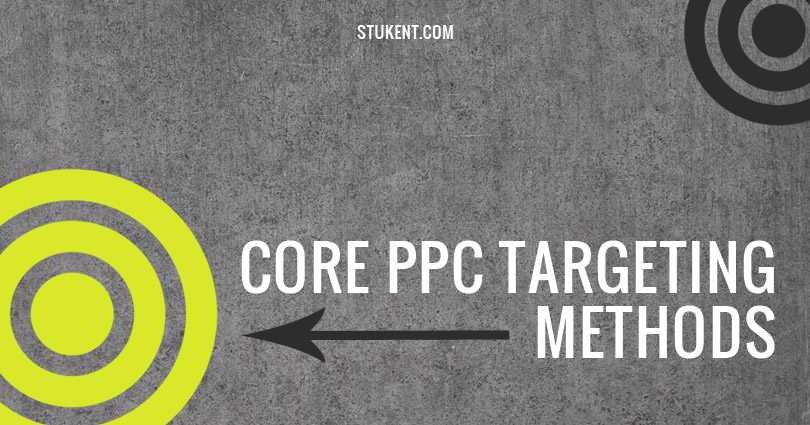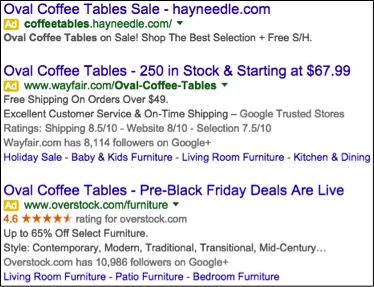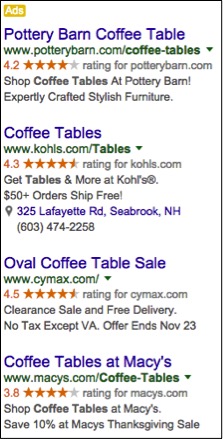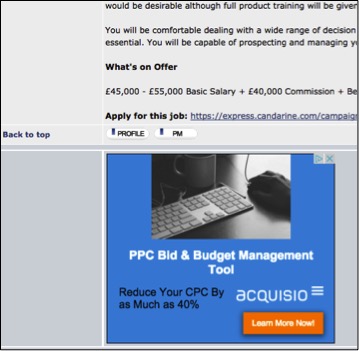Pay-per-click (PPC) advertising, also known as paid search, has evolved significantly over the years. The original action of a user conducting a search and seeing a relevant ad is still applicable, but the means of targeting users have become more sophisticated. In this post, we’ll cover the two ways to target users – through keywords and audiences, and discuss the parameters of each tactic.
A crucial point to keep in mind is that paid search is about targeting user intent. In other words, we’re hoping to show ads based upon what users are searching or what their interests are. This targeting differs from say a billboard on a road. Everyone who drives by, even if the message isn’t relevant, is seeing the billboard. Through keyword and audience targeting, we’re hoping only to show ads to users who are in the state of mind to click our ads.
Let’s begin by looking at keyword targeting.
Keywords
As mentioned above, keyword targeting has been the core component of PPC advertising. Advertisers bid on keywords, and when a user search query matches to that keyword, an ad is shown. There are four main keyword match types to which advertisers can use. They include:
- Exact Match – The query must match the keyword exactly
- Phrase Match – The query must be in a specific order, but will still show if there are additional terms before or after.
- Modified Broad Match – The query must contain terms designated with a plus sign. The order of the query does not matter.
- Broad Match – The query can match all or part of the keyword, but can also trigger variants.
Here is an example of the same keyword with different match types and potential search queries that will trigger ads.

When we conduct a search for “oval coffee tables” here are the top three paid search ads above the organic results.
All three ads speak to “oval coffee tables” while mentioning benefits and promotions. Users look at these ads and know they are relevant to the search query. In comparison, only one of the right side ads speaks to “oval coffee tables.”
Three of the ads reference coffee tables, but the query is more specific. It’s imperative to have congruence throughout the whole search process. The search query needs to match to the right keyword, and the ensuing ad should speak to that theme. Finally, the ad’s landing page should lead to a page speaking to the theme. We are spending money every time our ads are clicked, so we want to ensure the most qualified traffic is coming in.
Audiences
Along with keyword targeting, Google has always shown ads on their Display Network. This network is comprised of 1000s of sites, such as The New York Times and TV Guide. Advertisers can show various ad formats across these sites, including:
- Text ads
- Image ads
- Rich media ads
- Video ads
Ads can show within and next to content. Here is an example of an image on a Google Display Network site.
Audience targeting has since been applied to platforms such as Facebook, LinkedIn, and Twitter. The idea of this type of targeting is to show users relevant ads based upon a variety of factors, including (but not limited to):
- Age
- Behaviors
- Contextual keywords
- Gender
- Interests
- Profession
- Topics
- Demographics
Unlike keyword targeting, users aren’t searching for a product or service. We are using the demographics we know about these users to show relevant ads. For example, let’s say we are selling New England Patriots apparel. We know that one of our potential audiences is football fans who like the Patriots and visit football related sites. In Google, we can show our ads on sites that reference football and/or the Patriots. Using Facebook, we can target those interested in football and the Patriots and who live in the New England area. Either way, we are targeting a relevant audience that may not be ready to buy, but is more inclined to better connect with the ads they view.
Audience targeting is also great when there isn’t much search demand. Instead of focusing on keywords, advertisers can target relevant audiences. As an example, a company may provide office design services. This company could target decision makers of businesses who reside in office buildings. The sky is the limit when it comes to audience targeting options.
The most refined type of audience targeting is remarketing. By implementing code on our site, we can show ads to past visitors. Google is the most common platform advertisers use for remarketing, but there are many vendors who provide the service.
Remarketing is especially worthwhile when trying to win back lost converters. For example, if a user adds an item to his shopping cart, but then leaves the site, we can show a tailored add to this person. Or, if a user views a specific part of the site, we can tailor the ad to reference this category. Remarketing ads “follow” users across the web as they continue to research the product or service they have shown interest.
Conclusion
When running paid search campaigns, remember that user intent is the main factor you should be considering. With keywords, make sure the process from search query to landing page is in sync throughout the entire process. When advertising to audiences, use available targeting methods to get users interested in your product or service, even if they aren’t looking for you. More than ever before, paid search is a highly targeted medium to show the most relevant ads to users.









